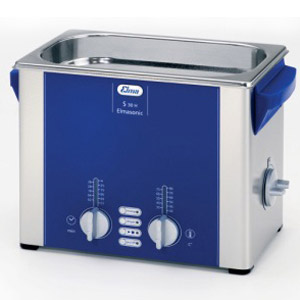- Generality
- Experimental User Friendliness
- Scientific Interest and Potential
- Criteria #4
- Criteria #5
-
General Characteristics
Even though the rate acceleration effect of sonication has been long known, its application to organic synthesis is becoming popular only relatively recently.
The development was slow because the early studies were limited to aqueous reactions and the equipment were not widely available. From the early 1980’s, synthetically relevant reports started to appear.
The field that focuses on the effect of sonication is called sonochemistry.
-
General References
<Reviews>
- Einhorn, C.; Einhorn, J.; Luche, J.-L. Synthesis 1989, 787. DOI: 10.1055/s-1989-27398
- Mason, T. J. Chem. Soc. Rev. 1997, 26, 443. DOI: 10.1039/CS9972600443
- Suslick, K. S. Science 1990, 247, 1439. DOI: 10.1126/science.247.4949.1439
- Suslick, K. S.; Flannigan, D. J. Annual Rev. Phys. Chem. 2008, 59, 65.
-
Mechanism
Although there are still unknown factors, sonication is thought to have following effects other than just helping reactants dissolve well.
The frequency of ultrasonication is 20-1000 kHz, which is not sufficient to trigger molecular excitation needed for chemical reactions. When compared with electromagnetic waves, the energy of ultrasonication is only comparable to radio wave (Figure 1).

Figure 1
The rate acceleration is thought to originate from so-called cavitation phenomenon.
When a compressional wave is applied in liquids, it generates high-pressure regions and low-pressure regions. In the latter region, in which the pressure is sufficiently lower than the vapor pressure, cavities are formed. In there, dissolved gasses and solvent vapor form bubbles that undergo periodic changes. While small bubbles dissolve quickly after it forms, larger bubbles have longer lifetime, even though they only shrink and expand with the ultrasonic energy cycle and have no chemical effect. These are called “stable cavitations.”

Figure 2
What influences chemical reactions is considered to be the behavior of suitably sized small bubbles. These bubbles form, grow, and implosively collapse as shown in Figure 2. The collapse generates remarkably high pressure and temperature (which are thought to reach 1000 atm and several thousand degrees Celcius!). This event is known as “transient cavitation.”
The theory that rate acceleration effect is attributed to the localized high temperature produced by transient cavitation was proposed in 1950’s and is now recognized as a plausible explanation (the hot-spot theory).
-
Examples
Application to Wittig reaction [1]: The deprotonation of the phosphonium salt by n-BuLi was very slow, due partly to the low solubility of the salt in THF. With sonication, the ylide formation completed in 1 hour and the product was obtained in 91% yield.

Application to secondary alcohol oxidation with permanganate[2]: Sonication allowed the reaction to proceed in hydrocarbon solvents. Unlike the stirring conditions, the sonicated conditions showed little solvent dependence.

Application to acetal protection of a sugar[3]: The use of ultrasonication shortened the reaction time and improved the yield of diacetal by 20-30%.

-
Experimental Tips
-
References
- Low, C. M. R. PhD Thesis, Imperial College,Unversity of London, 1986.
- Yamazaki, J.; Sumi. S. et al. Chem. Lett. 1983, 379.
- Schmidt, O. T. Methods Carbohydr. Chem. 1963, 2, 318.
-
Related Books
[amazonjs asin=”0198503717″ locale=”US” title=”Sonochemistry (Oxford Chemistry Primers)”]
[amazonjs asin=”1617286524″ locale=”US” title=”Sonochemistry: Theory, Reactions and Syntheses, and Applications (Chemistry Engineering Methods and Technology) (Chemical Engineering Methods and Technology)”]
[amazonjs asin=”1489919120″ locale=”US” title=”Synthetic Organic Sonochemistry”]
-
External Links
- Sonication – Wikipedia
- Sonochemistry – Wikipedia
- Ultrasound assisted organic synthesis (PDF)
- SONOCHEMISTRY: ULTRASOUND APPLICATIONS IN ORGANIC SYNTHESIS (PDF)
- sonochemistry (Organic Chemistry Portal)

